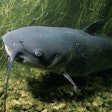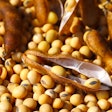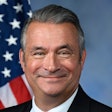The National Grain and Feed Association (NGFA) submitted a statement to the U.S. Food and Drug Administration (FDA) regarding an agency guidance document pertaining to animal food rules issued mandated under the Food Safety Modernization Act (FSMA).
FDA issued a notice of availability of a draft guidance titled “Hazard Analysis and Risk-Based Preventive Controls for Food for Animals,” published on Jan. 23 in the Federal Register. The draft guidance is intended to help animal feed facilities comply with the requirements for hazard analysis and risk-based preventive controls under the agency’s regulations for Current Good Manufacturing Practice, Hazard Analysis, and Risk-Based Preventive Controls for Food for Animals (Animal Food Rule).
The American Feed Industry Association (AFIA) also submitted comments related to the guidance.
NGFA’s statement, submitted July 23, addresses a variety of issues, including:
- The vast majority of hazards that are known or reasonably foreseeable for animal feed facilities can be controlled adequately through prerequisite programs and do not require the use of preventive controls. The NGFA urged FDA to more clearly indicate this fact when issuing its final guidance.
- FDA’s final guidance should draw greater distinctions between direct human contact animal food and livestock and poultry feed related to the need for control of pathogens. More specifically, the NGFA strongly recommended that FDA clearly state in its final guidance that pathogens typically are not of regulatory concern for facilities involved in manufacturing and distributing livestock and poultry feed.
- The draft guidance’s Appendix E, which lists potential hazards associated with various animal food ingredients, should not, by default, become known or reasonably foreseeable hazards that FDA expects to be addressed by animal food facilities during their hazard analysis. The NGFA urged FDA to characterize such hazards within its final guidance as being potential hazards and clarify that each facility is responsible for determining those hazards that are known or reasonably foreseeable for its own operation.
In its statement, the NGFA commended FDA for “the open and collaborative” process used to solicit input from stakeholders during the rulemaking process.
“We also appreciate the agency’s ongoing commitment to providing a variety of resources — including guidance documents — to assist the industry in understanding and meeting regulatory expectations,” the NGFA stated. “We believe that, once finalized, FDA’s Hazard Analysis and Risk-Based Preventive Controls for Food for Animals (PC) guidance will be extremely valuable to facilities when developing compliance strategies and assuring animal food safety.”
















